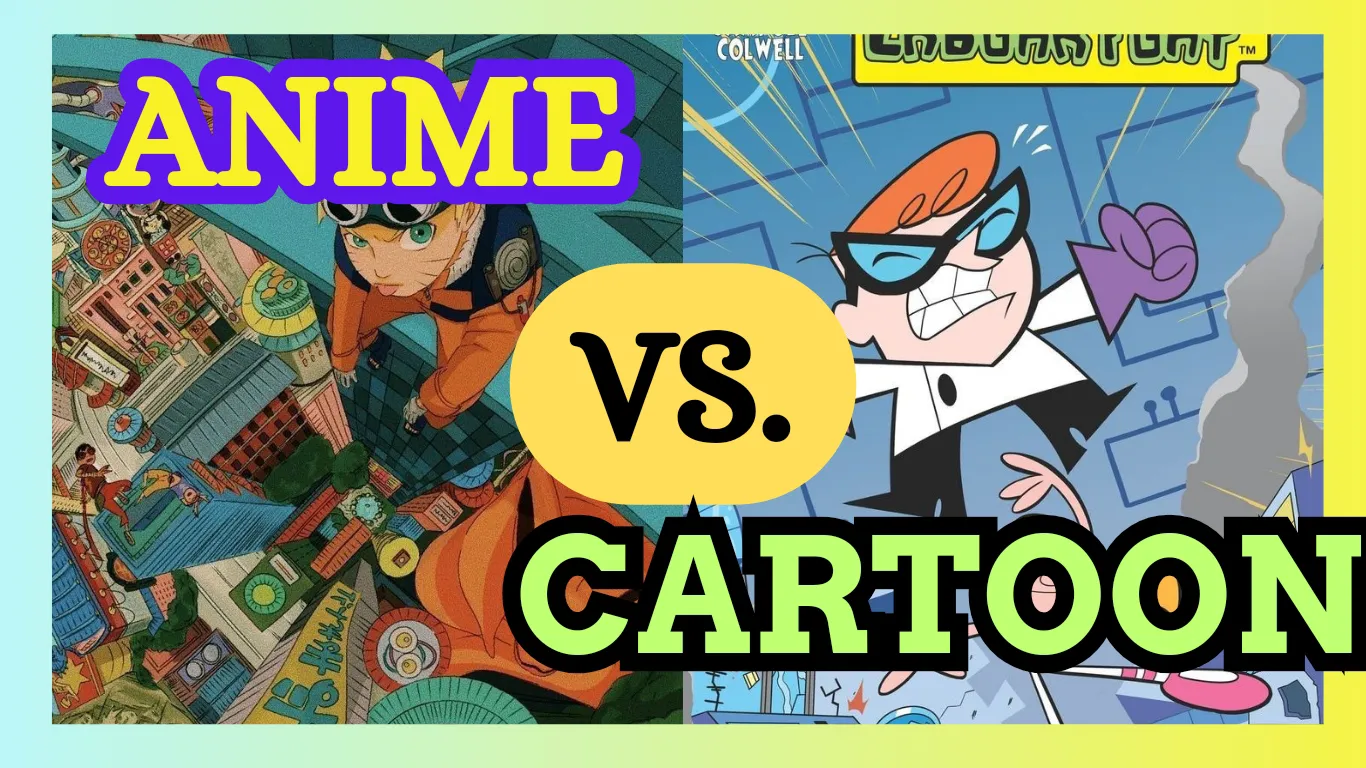As an anime lover from India, I often hear, “Why do you keep watching cartoons even though you’re an adult?” While I know the difference and can explain it calmly, it can be frustrating to answer the same question repeatedly.
If you’ve struggled to articulate the distinction, this post is for you. I’ve compiled this guide to help you not only understand the key differences between anime and cartoons but also explain them confidently to others.
Let’s dive in and explore what truly sets anime apart from cartoons.
And can show the others what makes cartoon different from Anime.
So let’s start this post.
What is a Cartoon?
Cartoons are animations you likely grew up watching—iconic shows like Ben 10, Ed, Edd n Eddy, Powerpuff Girls, Dexter’s Laboratory, He-Man and many more. These fun, imaginative stories shaped our childhood, we always rushed from schools to get in front of the T.V. to watch continuously for 4-5 hours, but what exactly defines a cartoon?
Definition of a Cartoon
According to Merriam-Webster’s Dictionary:
“A cartoon is a type of visual art that is typically drawn, frequently animated, in an unrealistic or semi-realistic style. It often focuses on satire, caricature, or humor.”
In simpler terms, cartoons are primarily designed for entertainment, often targeting younger audiences, though there are exceptions like adult comedies (The Simpsons, Family Guy). Their distinct style and humorous tone make them easy to identify.
What is Anime?
Anime, on the other hand, is a world of rich storytelling and breathtaking visuals, originating from Japan. Popular examples include Naruto, One Piece, and Dragon Ball Z—series that hold a special place in the hearts of fans worldwide.
Until 7-8years ago there was no distinction between Anime and cartoon even to us until we came to understand that these are very different things.
Definition of Anime
Anime is defined as:
“Hand-drawn and computer-generated animation originating from Japan. While the term refers to animation from Japan, many works outside Japan that imitate its unique style are also called anime.”
Japanese culture plays a vital role in anime’s storytelling, art, and themes. Unlike cartoons, anime appeals to a broader age range, tackling genres like action, romance, horror, and even complex psychological themes.
Key Differences Between Anime and Cartoons
Now that we know what anime and cartoons are, let’s dive into their differences.
1. Art Style
Cartoons: Simple and exaggerated, with bright colors and comedic designs.
Examples: Tom and Jerry, Looney Tunes.
Anime: Detailed and realistic, focusing on artistic expressions and cultural aesthetics.
Examples: Attack on Titan, Death Note.
2. Storytelling Approach
Cartoons: Episodic with standalone stories.
Example: Each SpongeBob SquarePants episode can be enjoyed without prior knowledge.
Anime: Linear and narrative-driven, often requiring viewers to follow the story chronologically.
Example: The emotional growth of Naruto Uzumaki throughout Naruto and Naruto Shippuden.
3. Themes and Audience
Cartoons: Typically lighthearted, aimed at children but sometimes catering to adults (Rick and Morty).
Anime: Wide-ranging themes for all ages, from child-friendly (Pokémon) to mature audiences (Berserk, Monster).
4. Cultural Influence
Anime heavily incorporates Japanese culture, mythology, and societal issues, making it unique compared to the largely Western roots of cartoons.
5. Duration
Anime episodes generally run 20–25 minutes with overarching plots, while cartoons are shorter, often split into mini-segments.
Why Understanding the Difference Matters
For anime fans, distinguishing between anime and cartoons isn’t just about definitions. It’s about showcasing the depth, artistry, and cultural significance of a medium often dismissed as “just cartoons.”
And since it has also been a integral part of our life we feel hurt when someone call anime ‘just cartoons’.
Conclusion
Anime and cartoons may share the same foundation of animation, but they are vastly different in execution, themes, and audience appeal.
While cartoons are beloved for their humor and nostalgia, anime offers a diverse and immersive experience that resonates with audiences worldwide.
So, the next time someone calls anime a “cartoon,” you’ll have all the answers ready to show them just how much more anime has to offer.


